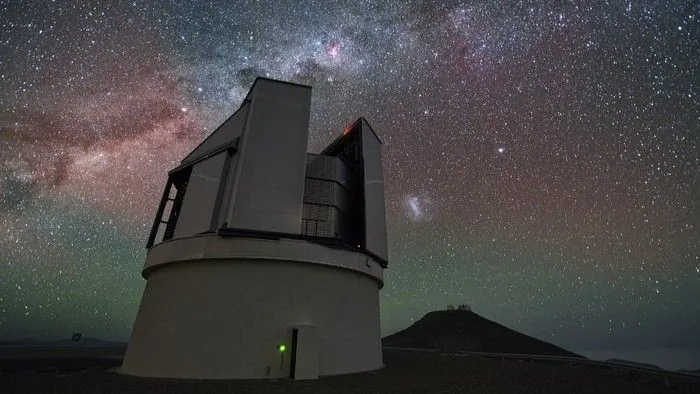
Astronomers Unveil the Ultimate Infrared Map of the Milky Way: A Breakthrough in Galactic Exploration!
2024-09-26
Author: Wei Ling
Introduction
In a groundbreaking achievement, astronomers have released the most detailed infrared map of our Milky Way galaxy, revealing a staggering 1.5 billion celestial objects. This monumental project spanned 13 years and involved observations taken over 420 nights, resulting in an intricate tapestry of our galaxy's vast landscape.
The Technology Behind the Discovery
Utilizing the advanced capabilities of the European Southern Observatory's (ESO) Visible and Infrared Survey Telescope for Astronomy (VISTA) in Chile, the researchers captured a remarkable collection of 200,000 images that collectively depict an array of stars, elusive brown dwarfs often referred to as “failed stars,” free-floating planets, and hypervelocity suns that have been ejected into the cosmos following close interactions with Sagittarius A*, the supermassive black hole at the heart of our galaxy.
Significance of the Research
Project lead Dante Minniti, an astrophysicist at Universidad Andrés Bello in Chile, expressed the significance of this discovery: “We made so many discoveries, we have changed the view of our Galaxy forever.” These words highlight the transformative impact of the research, which was published on September 26 in the prestigious journal Astronomy & Astrophysics.
The Map Creation
The map was crafted using the VISTA InfraRed CAMera (VIRCAM), an infrared camera specially designed to penetrate the dust and gas clouds obscuring much of the Milky Way. Through this state-of-the-art technology, the team was able to detect the faint infrared radiation emitted by previously undetected sources, including the enigmatic brown dwarfs straddling the boundary between stars and planets.
Observational Methods
The researchers conducted numerous repeat observations of specific regions, allowing them to observe changes in the brightness and movements of these objects over time. This level of detail could drastically enhance our understanding of the formation and evolution of our galaxy.
Future Implications
This monumental advancement underscores the unceasing pursuit of knowledge in astrophysics and promises to answer vital questions regarding the structure and constituents of our galactic neighborhood. As we delve deeper into the cosmos, who knows what other mysteries the Milky Way has yet to reveal? Buckle up, stargazers; the universe just became a lot more intriguing!




 Brasil (PT)
Brasil (PT)
 Canada (EN)
Canada (EN)
 Chile (ES)
Chile (ES)
 Česko (CS)
Česko (CS)
 대한민국 (KO)
대한민국 (KO)
 España (ES)
España (ES)
 France (FR)
France (FR)
 Hong Kong (EN)
Hong Kong (EN)
 Italia (IT)
Italia (IT)
 日本 (JA)
日本 (JA)
 Magyarország (HU)
Magyarország (HU)
 Norge (NO)
Norge (NO)
 Polska (PL)
Polska (PL)
 Schweiz (DE)
Schweiz (DE)
 Singapore (EN)
Singapore (EN)
 Sverige (SV)
Sverige (SV)
 Suomi (FI)
Suomi (FI)
 Türkiye (TR)
Türkiye (TR)
 الإمارات العربية المتحدة (AR)
الإمارات العربية المتحدة (AR)